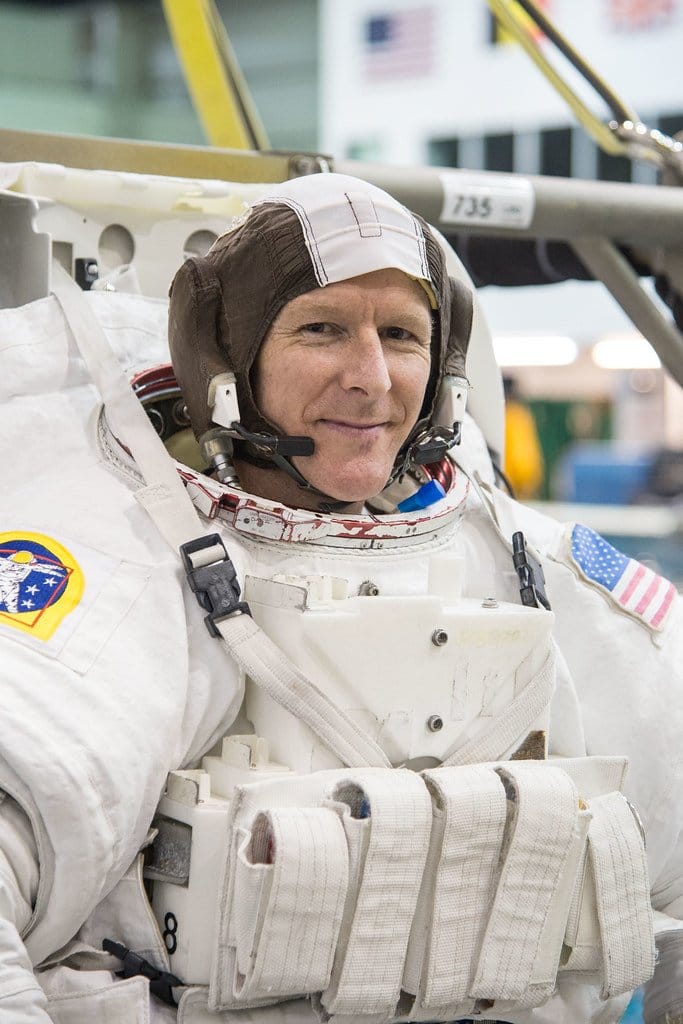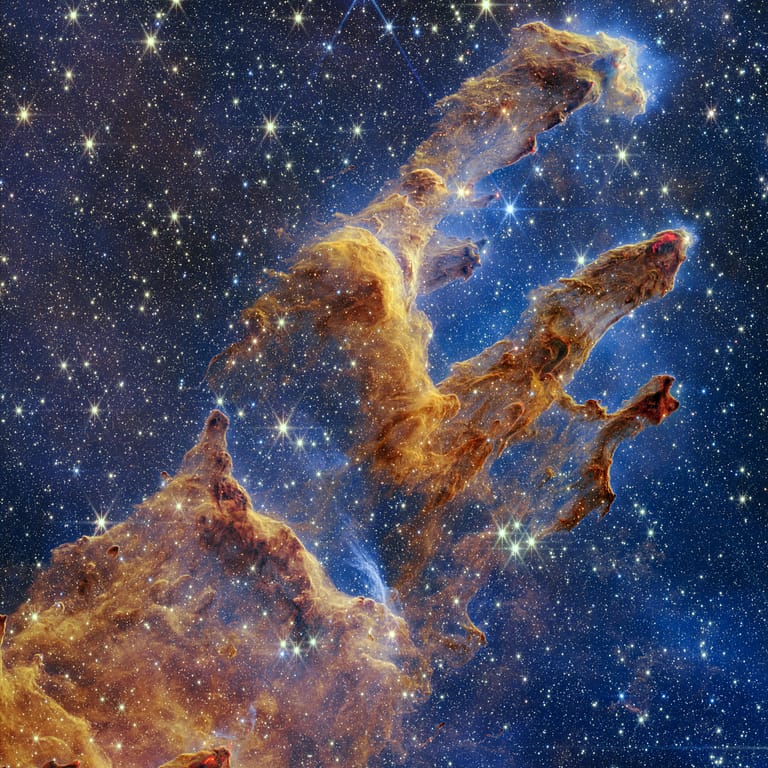For space explorers, the infinite cosmos is both a daunting challenge and an irresistible invitation. It beckons with the promise of discovery and the potential for unparalleled adventure among the stars.
Each mission into the vast unknown is a step toward answering humanity’s most profound questions and realizing our place within the infinite expanse. From the early days of satellite launches to the complex operations of manned missions and the establishment of the International Space Station, each step into the unknown has been a testament to our collective desire to understand our place in the universe.
Here is a look at some interesting facts about space and space exploration.
The First Space Repairman: Astronaut Steve Robinson became the first astronaut to perform a repair on the exterior of a spacecraft, the Space Shuttle Discovery, in orbit during STS-114 in 2005. With concerns over potential damage to the shuttle’s thermal protection system, Robinson was tasked with removing two protruding gap fillers from the shuttle’s underside. This delicate task was accomplished using his gloved hands while attached to the International Space Station’s robotic arm, highlighting the adaptability and courage required for space missions and the intricate relationship between humans and machines in the void of space.
Skylab’s Troubled Start: America’s first space station, Skylab, faced a near-catastrophic beginning in 1973 when it lost its micrometeoroid shield/sunshade during launch, resulting in excessive heating and power loss. The first crewed mission to Skylab had to perform a spacewalk to deploy a makeshift sunshade, effectively saving the station and allowing it to complete its mission. This incident showcased the unpredictability of space missions and the ingenuity required to solve problems on the fly.

Tim Peake’s Wrong Number Call from Space: British astronaut Tim Peake once dialed a wrong number from the International Space Station, apologizing to the bewildered woman on the other end with “Hello, is this planet Earth?” This humorous incident during Peake’s mission in 2015-2016 highlights the ordinary human moments that can occur even in the extraordinary environment of space, reminding us of the personal experiences and challenges astronauts face while orbiting Earth.
The First Spacewalk Nearly Ended in Tragedy: Alexei Leonov, the first person to conduct a spacewalk in 1965, encountered a life-threatening situation when his spacesuit expanded in the vacuum of space, preventing him from re-entering his spacecraft. Leonov had to partially depressurize his suit, risking “the bends,” to fit back through the airlock. This harrowing experience underscored the dangers of space exploration and led to significant improvements in spacesuit design and emergency procedures for extravehicular activities (EVAs).

The First Tweet from Space: In 2009, astronaut Mike Massimino made history by sending the first tweet from space, stating, “From orbit: Launch was awesome!! I am feeling great, working hard, & enjoying the magnificent views, the adventure of a lifetime has begun!” This event marked the beginning of real-time social media communication between astronauts and the public, significantly bridging the gap between space and Earth and making space exploration more accessible and engaging to people worldwide.
The Apollo 12 Lightning Strike: Shortly after liftoff, Apollo 12 was struck by lightning, not once, but twice, causing a temporary loss of fuel cell power and guidance systems. Quick thinking by flight controller John Aaron and the crew, who reset the fuel cells using the SCE to AUX switch, saved the mission. This incident demonstrated the unpredictability of launches and the critical importance of teamwork and problem-solving
Astronaut Chris Hadfield’s Space Oddity: Canadian astronaut Chris Hadfield captivated the world in 2013 by performing David Bowie’s “Space Oddity” aboard the ISS, accompanied by his guitar. This was the first music video shot in space, showcasing the lighter side of space travel and the unique experiences of astronauts living in microgravity. Hadfield’s performance highlighted the cultural impact of space exploration
The First Space Salad: In 2015, astronauts aboard the International Space Station (ISS) made history by eating red romaine lettuce that was grown in space, marking the first time astronauts consumed food grown in a microgravity environment. This was part of NASA’s Veggie experiment, aimed at understanding how plants grow in space. The ability to grow food in space is crucial for future long-duration missions, such as missions to Mars, as it could reduce the need for resupply missions from Earth and provide

The Hubble Deep Field: In 1995, the Hubble Space Telescope pointed at a seemingly empty patch of space and took an extended exposure, resulting in the Hubble Deep Field image. This image revealed over 3,000 galaxies, some of which are among the youngest and most distant known, providing a profound insight into the universe’s vastness and the abundance of galaxies. The Hubble Deep Field has been instrumental in our understanding of the early universe, galaxy formation, and evolution.
Astronauts Casting Votes from Space: Since 1997, astronauts have been able to cast their votes from space thanks to a law passed in Texas, where most astronauts live during their training. This process involves a secure electronic ballot sent to the astronauts via email to the ISS, which they then fill out and send back to Earth. Voting from space highlights the importance of civic duty and the ability to participate in democracy, even while orbiting the Earth at 17,500 mph.
Mir Space Station Collision: In 1997, the Russian Mir Space Station experienced a significant collision with a resupply vessel, causing a depressurization of one of its modules and putting the entire station in jeopardy. The crew worked in extremely challenging conditions to seal the damaged module and stabilize the station. This incident tested the resilience and resourcefulness of the crew, highlighting the risks of space travel and the importance of crisis management and emergency preparedness in an environment where external help is not immediately available.

The Blue Marble Shot: One of the most iconic images of Earth, known as “The Blue Marble,” was taken in 1972 by the Apollo 17 crew. This image was one of the first to show the Earth in full view, highlighting its fragility and the unity of humanity. It has since become a symbol of environmental conservation and has had a profound impact on the global consciousness regarding our planet’s vulnerability and the importance of stewardship of our home in the vastness of space.
Zero-G Espresso: In 2015, astronauts on the International Space Station got a significant upgrade to their dining options with the addition of the ISSpresso machine, the first espresso machine designed to work in microgravity. This innovation allowed astronauts to enjoy fresh espresso and other hot beverages, bringing a taste of home to the space environment. The ISSpresso symbolizes the progress in improving living conditions in space, catering to not just the physical but also the psychological needs of astronauts during long-duration missions.
The Apollo 11 Moon Landing Broadcast: The Apollo 11 mission, which landed the first humans on the Moon in 1969, was watched by an estimated 600 million people worldwide, making it one of the largest television audiences in history. This historic event brought humanity together, showcasing the incredible achievements possible through cooperation and innovation. The broadcast not only demonstrated the technological achievements of the era but also inspired generations to dream big and pursue exploration and discovery.

Interstellar Visitor ‘Oumuamua: In 2017, astronomers detected ‘Oumuamua, the first known interstellar object to pass through our solar system. Its unusual shape and acceleration puzzled scientists, leading to various theories about its origins, including speculation about an artificial object. Though most evidence points to natural origins, ‘Oumuamua’s visit underscores the potential for future discoveries of interstellar objects and the importance of Earth-based and space-based observatories in expanding our understanding of the universe.
The Gemini 8 Near-Disaster: The Gemini 8 mission, manned by Neil Armstrong and David Scott in 1966, faced a critical situation when a stuck thruster caused the spacecraft to spin uncontrollably. Armstrong’s quick thinking and decisive action to shut down the thrusters and use re-entry control systems stabilized the spacecraft, preventing a potential catastrophe. This incident tested astronaut training and problem-solving under pressure, highlighting the risks of space travel and the importance of preparedness for unexpected challenges.

The First Space Crime Allegations: In 2019, allegations emerged of the first crime committed in space when astronaut Anne McClain was accused of improperly accessing her estranged spouse’s bank account while aboard the International Space Station. Though McClain denied any wrongdoing, and the claims were eventually deemed unfounded, the incident raised questions about jurisdiction and legal frameworks in space, underscoring the need for international cooperation and legal clarity as humans spend more time in space and engage in more complex activities.
The Sun’s Missing Neutrinos Puzzle: For years, scientists observed fewer neutrinos (subatomic particles) from the sun than theoretical models predicted, a mystery known as the “solar neutrino problem.” This discrepancy was eventually solved by understanding that neutrinos have mass and can change types, or “oscillate,” as they travel to Earth. This discovery was a significant breakthrough in particle physics and astrophysics, leading to the 2015 Nobel Prize in Physics for the discovery of neutrino oscillations.

The Pillars of Creation: One of the Hubble Space Telescope’s most famous images, the Pillars of Creation, showcases towering columns of gas and dust in the Eagle Nebula, where new stars are being born. This awe-inspiring image, first captured in 1995 and revisited with higher resolution in 2014, has become an iconic representation of the beauty and dynamism of the cosmos, illustrating the ongoing processes of star formation and the intricate structures that can arise in nebular clouds.
Space Burial: Since the late 1990s, a service known as a “space burial” has been offered, where a symbolic portion of a person’s cremated remains can be launched into space. Celestis, one of the companies offering this service, sends these remains into Earth orbit, to the Moon, or even into deep space, providing a celestial resting place. This service highlights the intersection of space exploration with personal and cultural expressions of memorial.
Plants in Space: Experiments on the International Space Station have shown that plants can grow in microgravity, though with some differences from Earth. For instance, in the absence of gravity, plants use light as a guide to grow. Understanding plant growth in space is crucial for future long-duration missions, as plants could provide a sustainable food source and contribute to life support systems by recycling carbon dioxide and producing oxygen.
Wi-Fi on the Moon: NASA plans to establish a Wi-Fi network on the Moon as part of the Artemis program, aiming to return humans to the lunar surface. This lunar Wi-Fi would support communication between lunar habitats, rovers, and astronauts, marking a significant step in creating sustainable human presence on the Moon. This initiative underscores the role of advanced communications technologies in expanding human exploration and presence in space.
Wine Aged in Space: In a unique experiment, a French wine company sent 12 bottles of red wine to the ISS to age for a year, exploring how microgravity affects the aging process. The wine returned to Earth in 2021, and initial tastings suggested subtle differences in flavor and composition compared to Earth-aged wine. This experiment offers insights into how space conditions can impact food and beverage production processes, potentially opening new avenues for culinary science.
The Apollo 12 Camera Incident: Shortly after landing on the Moon, the Apollo 12 mission faced a setback when astronaut Alan Bean accidentally pointed the lunar module’s color TV camera towards the Sun, frying its video sensor and leaving the mission without live video coverage. This incident highlighted the challenges of operating equipment in space and the importance of careful handling of sensitive instruments in unfamiliar environments.

